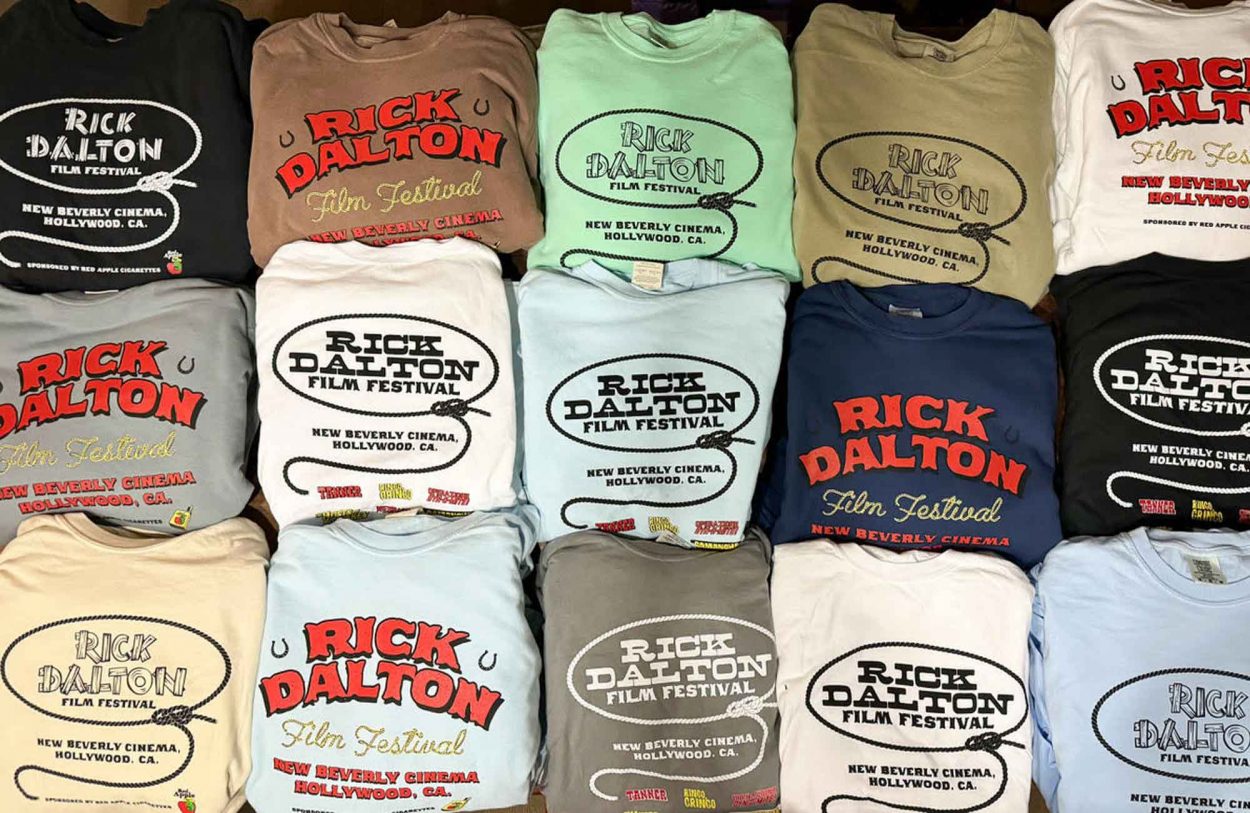Sal Mineo stars as a young Italian-American boy with the face of an angel, growing up in New York City – he’s sensitive, sheltered, maybe a little sickly, the apple of his immigrant parents’ eyes. He pursues the calling they have wished for him, to join the priesthood, yet his commitment to God is repeatedly tempted by the siren song of art and the world outside the church, a world of jazz musicians, gangsters and dope peddlers. You may find yourself chuckling at how often the idea pops into your head while watching, but no, this isn’t The Martin Scorsese Story, it’s The Gene Krupa Story (1959), a real milestone in Hollywood’s depiction of jazz on screen.
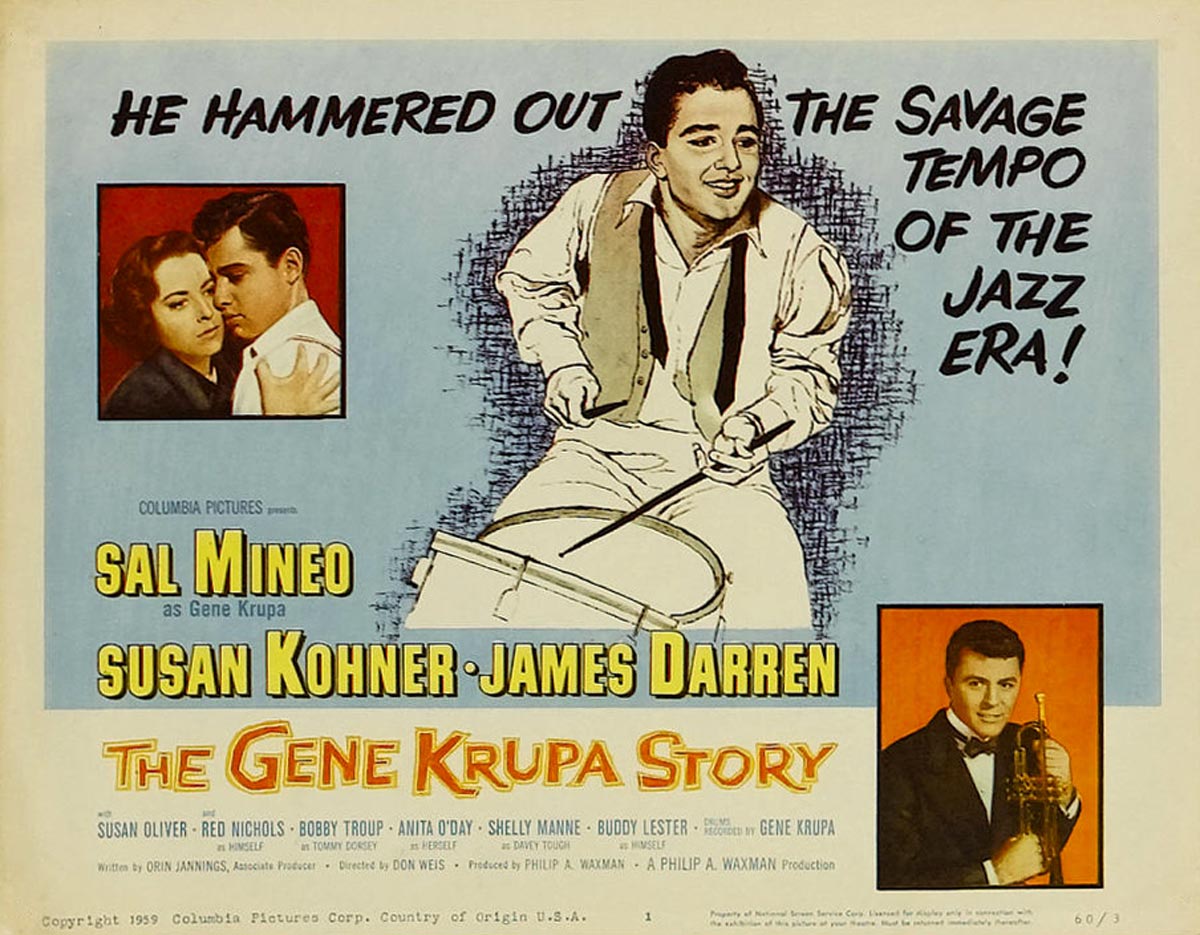
In case the name is unfamiliar to you, before there was Keith Moon (please don’t ask “Who’s he?”), there was Gene Krupa – a Mad Hatter of the drum kit whose antic clatter and voodoo mastery of the tom-toms ruled over the Big Band era in a variety of orchestras. Though his reign over modern jazz percussion lasted roughly from 1927 well into the 1960s, he is primarily remembered for his flamboyant seat in the Benny Goodman Orchestra, whose 1937 recording of “Sing, Sing, Sing” literally introduced the drum solo to popular music. Thanks to Krupa’s intensive study of African tribal music (then available only on Edison wax cylinders), the exciting performance embodied a more genuinely African character than white musicians had ever wielded before, something so rare that its shock value would remain palpable when Serge Gainsbourg released Gainsbourg Percussions in 1964.
Krupa had no end of musical achievements: he was the flashy time-keeper for Thelma Terry and her Playboys (the first woman-fronted jazz combo); he led his own band; he made a couple of the grooviest of all musician cameos in The Best Years of Our Lives (1947) and Ball of Fire (1951, playing matchsticks to Sugarpuss O’Shea’s sexily whispered “Drum Boogie”); he played memorable “drum battles” opposite Buddy Rich and Cosy Cole – but, his times being what they were, Krupa was known for being a pot-head by more people than ever heard him play. Indeed, it was often speculated in the wake of his well-publicized 1943 arrest for marijuana possession, that he probably couldn’t play the wild way he did without being hopped-up on the Devil’s weed.
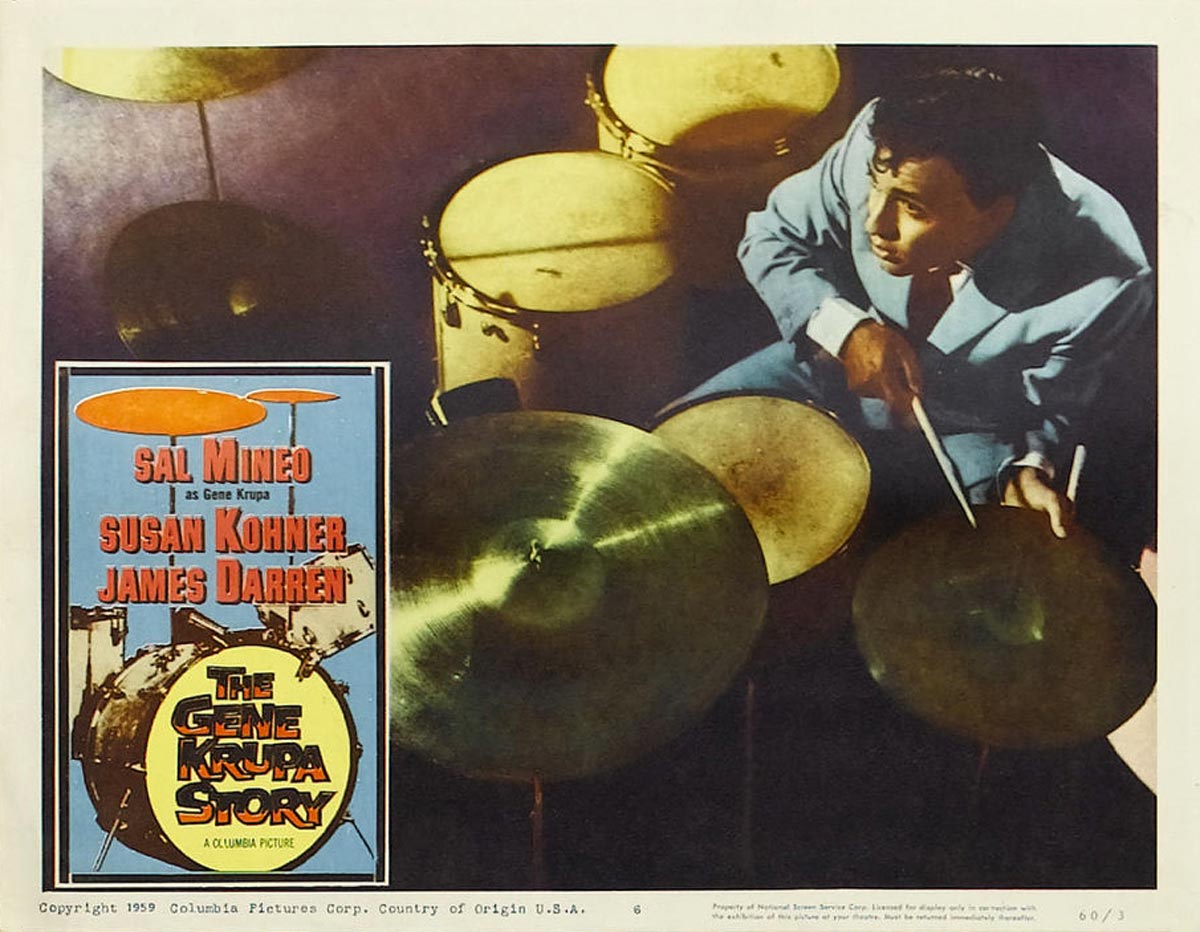
The 1950s were a big decade for musical biographies and it was inevitable that so sensational a showman as Krupa would be in line for one of his own. The Gene Krupa Story, directed by Don Weis for Columbia Pictures in 1959, was two years in the making. During that time, Rebel Without A Cause veteran Sal Mineo worked diligently alongside Krupa himself to mirror and master his drum parts, so that, when the time came to film him, Mineo looked more possessed by Krupa than doing an impersonation of him. Arguably, it would not be Jamie Foxx’s performance in Ray (2004) that an actor so convincingly channeled a character’s musical individuality as well as their personality.
What is odd about The Gene Krupa Story, considering Krupa’s presence on the film’s payroll, is how far it veers from the historical facts. Perhaps because an agreement with Benny Goodman or Brunswick Records could not be reached (or because Universal-International had already covered such ground in The Benny Goodman Story, 1956, which also featured Krupa), the film deprives Krupa of his career pinnacle and invents collaborations with Tommy Dorsey (played by Bobby Troup), Dave Tough (Shelly Manne), and Red Nichols. Anita O’Day also makes an appearance singing “Memories of You” (“Not bad – if you like talent”). As for Krupa’s original benefactor, Thelma Terry, she’s reconceived as “Dorissa Dinell” (Susan Oliver – always lovely in color, but stunning here in black-and-white) because Orin Jannings’ screenplay depicts her as a NYC femme fatale whose high-rise sophisticate ways not only tempt the young Gene to be unfaithful to his girl Ethel (the beautiful Susan Kohner) but also to partake of Hell’s herbal harvest (“Be somebody, Gino. Put your miseries out to pasture.”)
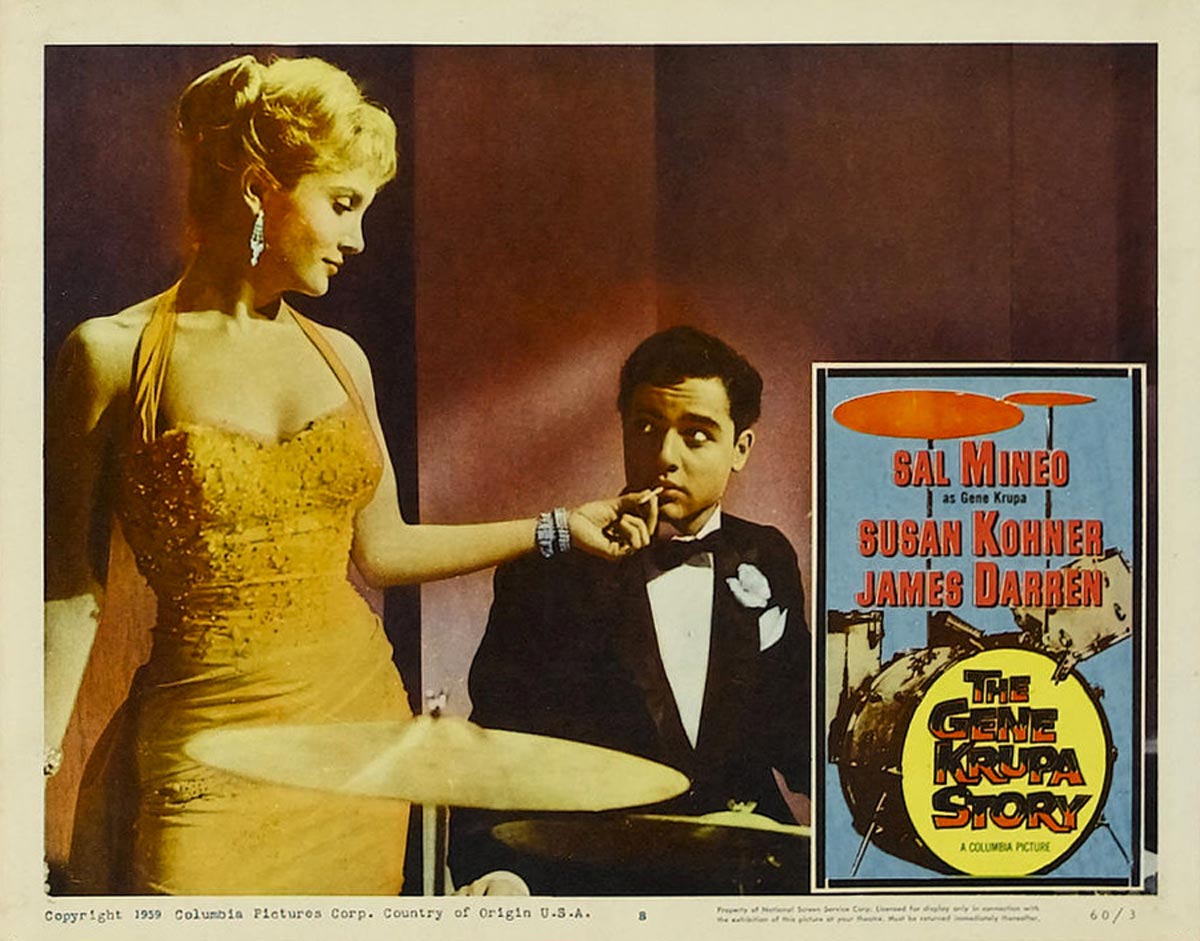
Glossily photographed in monochrome by Charles Lawton, Jr. – whose long career encompassed such credits as Tod Browning’s Miracles For Sale (1939), Orson Welles’ The Lady From Shanghai (1947), Delmer Daves’ Jubal and Budd Boetticher’s The Tall T (both 1957) – The Gene Krupa Story is really an enjoyable amalgam of The Glenn Miller Story (1954) and The Man With the Golden Arm (1955). Under Weis’ competent direction, it conveys real affection for Krupa and what he represented to his era, but it’s equally hooked on sensationalism, giving us newspaper headlines like JAZZMAN DOPE ADDICT GUILTY! What’s remarkable about this is that (apparently, in a rare instance of historical accuracy) Krupa is depicted as having been framed for his arrest and, though he admits to having tried marijuana and found it not to his liking (it throws him off-beat), we never see him under the influence of anything stronger than alcohol or the temptation to join the priesthood. It’s music that gets Krupa high (“I hear the ‘Ave Maria’ and my mind starts belting out a syncopated version of it!”); everyone else who takes a toke makes pot seem indistinguishable from (cue trumpets and bongos) heroin.
The film’s director, Don Weis, came to the job after years of serving with great distinction as a dialogue coach and script supervisor. Robert Rossen’s Body and Soul (1947), Abraham Polonsky’s Force of Evil (1948), Mark Robson’s Home of the Brave (1949), and Joseph Losey’s M and The Prowler (both 1951) were a few of his jobs from that period – he was working for a variety of directors, but there’s a certain uniformity to the list. They’re hard-hitting, leftist pictures all, serving up messages not easily swallowed, nor meant to be. His first directorial effort, a short entitled “A Letter From a Soldier,” followed suit; it was subsequently included in a Warner Bros. feature called It’s A Big Country: An American Anthology (1951), a compendium of stories addressing sensitive topics like racism and pacifism, which introduced Weis on equal footing with fellow directors Clarence Brown, Charles Vidor, William A. Wellman, Richard Thorpe, and John Sturges.
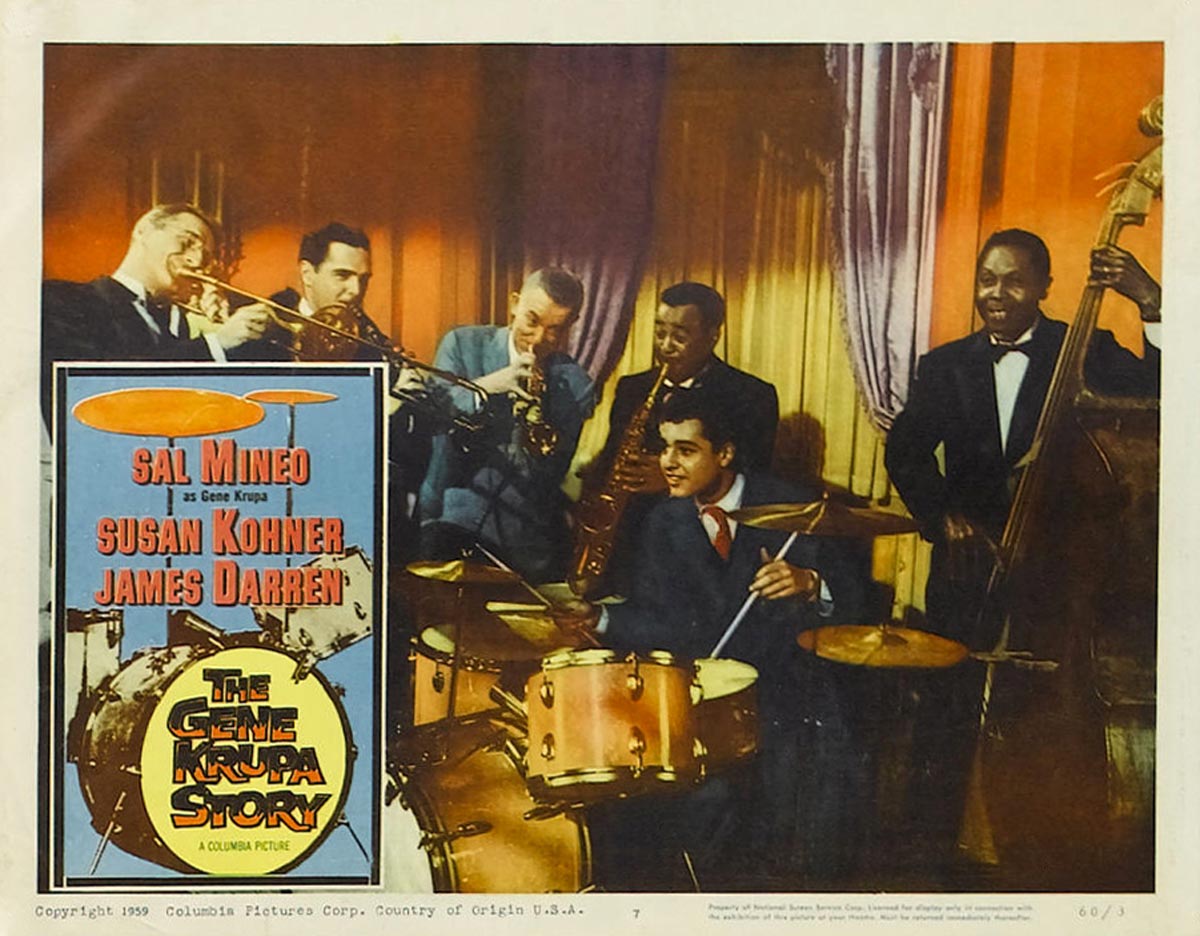
When Weis signed a contract to direct for MGM, he was commendably allowed to continue in this socially responsible vein, but when his solo directorial debut (Bannerline, a “message” picture based on a play by Samson Raphaelson) tanked at the box office in 1951, he showed immediate good will by agreeing to helm a series of pictures that altered the overall trajectory of his career. Comedies with bright, youthful players suddenly became the Weis stuff: Just This Once (1952) with Peter Lawford and Janet Leigh; You For Me (1952) with Lawford, Gig Young, and Jane Greer; I Love Melvin (1953) with Debbie Reynolds and Donald O’Connor; and, perhaps most definingly, The Affairs of Dobie Gillis (1953) with Debbie Reynolds and Bobby Van. Unfortunately, Weis’ defining picture also coincided with the end of his two-year contract and happened to be the first MGM musical since the 1930s to be released in black-and-white.
Weis subsequently followed his MGM cohort Peter Lawford to television, where directing episodes of Lawford’s NBC series Dear Phoebe led to five years of work on I Married Joan, The Loretta Young Show, Star Stage, Casablanca, Warner Bros. Presents, Alcoa Theater, Schlitz Playhouse, Wagon Train and M Squad. Weis evidently embraced such work because it offered him a variety of genres to explore, with no one trying to hem him in to any one thing. In 1956, he made Ride the High Iron, a media exposé much in the vein of Bannerline; originally made for television, Columbia Pictures decided it was too good to give away on TV and shipped out to theaters – as the B-title under Joseph H. Lewis’ 7th Cavalry with Randolph Scott and Barbara Hale. Between 1956 and 1959, Weis hunkered down to direct 19 episodes of Schlitz Playhouse and 14 of The Thin Man, starring (who else?) Peter Lawford.
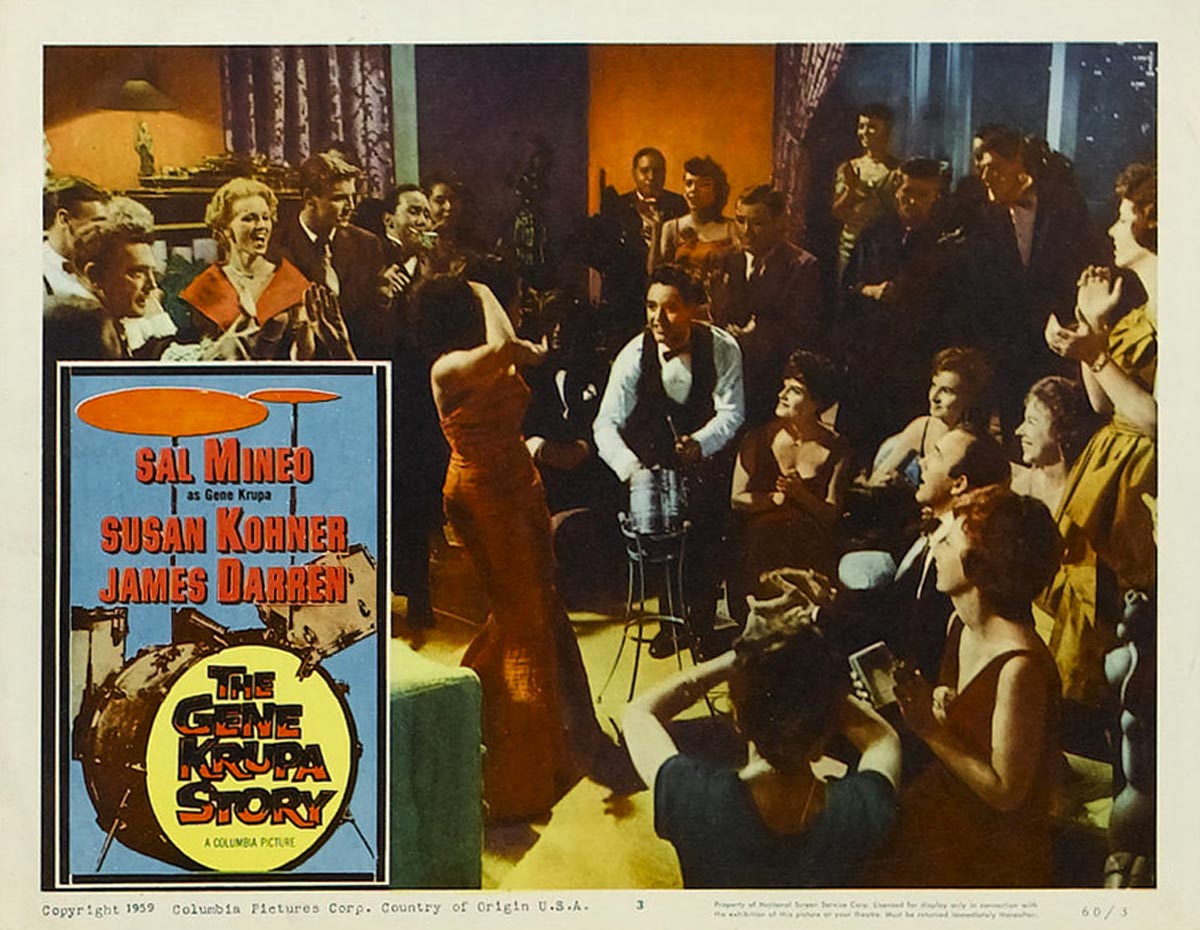
If there is anything about The Gene Krupa Story that seems to call out specifically for Weis, it’s his previous work on Bannerline and Ride the High Iron, as it seizes every chance it gets to editorialize that people shouldn’t believe everything they read. (See previous paragraph about how pot is portrayed.) He also has a mild, unobtrusive surety with both drama and humor that follows such an even keel that Mineo’s winning performance really pops when he’s unleashed behind the drum kit. By working so extensively in television, Weis had by this time accumulated more experience working with a variety of actors than most film directors, certainly those of his generation, and there are a number of supporting performances that really shine. Celia Lovsky (the wife of Peter Lorre) is formidable as Krupa’s Old World mother, despairing over her once-pious son’s submission to smoky speak-easys. Susan Kohner, best remembered for the mixed-race teenager cheating “the color line” in Douglas Sirk’s Imitation of Life (also 1959), deserves credit for playing Ethel with such persuasive warmth and intelligence; she’s one of the most credible “good girl” roles of the period. In a peculiar fictionalization of the true story, Gene and Ethel are depicted as falling in love, falling apart, and coming back together over a long period without official attachment; in real life, they were married twice (1934-42, 1946-55).
In an early screen appearance, Yvonne Craig (who, like the aforementioned Susan Oliver, was later painted green for a memorable Star Trek appearance) plays the first of several “bad girls” in Krupa’s life, a flirtatious girl with family ties to the underworld, and gives a surprisingly erotic performance for the late ‘50s. In her autobiography From Ballet to the Batcave and Beyond (2000), Craig recalled working with Mineo: “We had a really hot love scene that took place in the liquor locker of a club in which he was working. Both dialogue and action were very provocative for that day and age and ultimately wound up on the cutting room floor, but not before the scene had been scored by studio musicians… It was not a nude scene, we were completely clothed but it was, nonetheless, very steamy. When the film was screened for the Catholic Church in Los Angeles, a great hue and cry went up over this. The Archdiocese was upset because at that time in the film, Krupa was supposed to be considering the priesthood. Perhaps he really had an encounter in a liquor locker that changed his mind about celibacy and it wasn’t just dramatic license. I’d like to think so.” Sadly, this torrid deleted scene has yet to be recovered from the vaults at Sony.
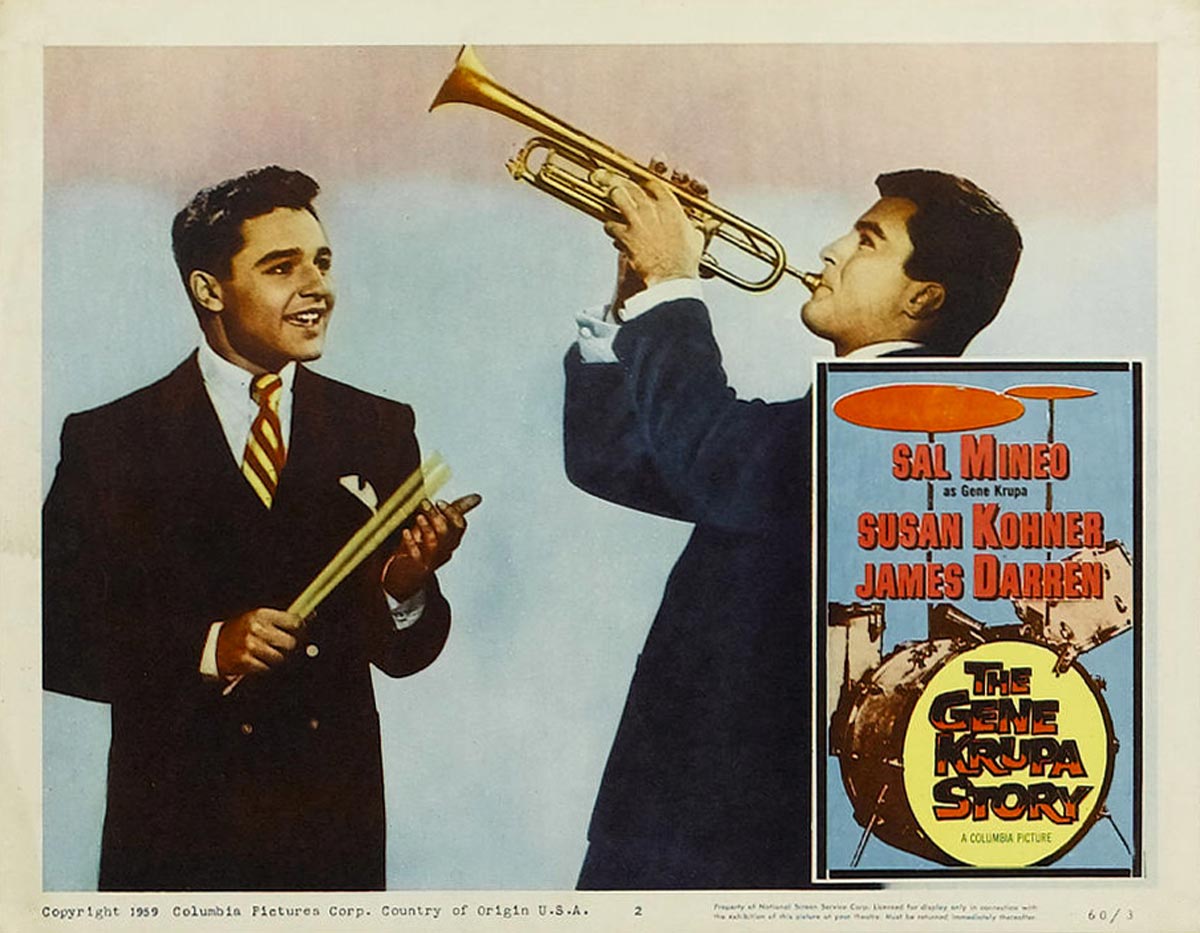
The film’s biggest surprise is James Darren, who very nearly steals the film as Krupa’s best friend and bandmate, Eddie Sirota. In any other film of this period, there’s no question that Darren’s good looks would net the girl – but that’s not what happens here. Instead, we’re treated to a believable account of how a woman can test the durability of a real male friendship, which gives Darren a chance to access thespic chops he never got to exercise elsewhere, and allows the film to say something most uncommon to Hollywood pictures about how looks don’t always win out in the world of romantic attachments. Furthermore, in this possibly career-best performance, Darren plays a trumpeter, which for some viewers will forge an intriguing connection between his character here and the haunted jazz bandleader he played in Jess Franco’s delirious ghost story, Venus In Furs (1969). The two films would actually make an inspired double feature. As it happens, Darren got the Gene Krupa gig immediately after playing Moondoggie in Gidget (1959), a movie whose popularity would completely alter the trajectory of his acting career, rebranding this very capable actor into a light leading man and and teen singing idol of the Colpix Records stable, alongside Shelley Fabares, Paul Petersen and the pre-Monkees David Jones. He is given an opportunity here to sing “Let There Be Love,” but in this setting his talent expresses the bitter truth that sometimes even good looks and all the talent in the world aren’t equal to novelty and persistence.
As for Sal Mineo, his work here – particularly the musical component – is nothing short of miraculous. From the opening shot, which establishes Krupa at his creative peak in a lowering crane shot from behind, the viewer is made to see through the character’s eyes, even when we’re looking at him, along with the other characters, with the most critical candor. His Krupa isn’t always an admirable guy, but despite his occasional surrenders to the temptations of success, we, like his patient Ethel, recognize something innately good and dear and constant about him that is not easily surrendered.
The Gene Krupa Story plays at the New Beverly Cinema on Friday, May 12 and Saturday, May 13 – directly after Rebel Without A Cause, at 9:20pm. Get there early and blast off.
© 2017 Tim Lucas. All rights reserved.

